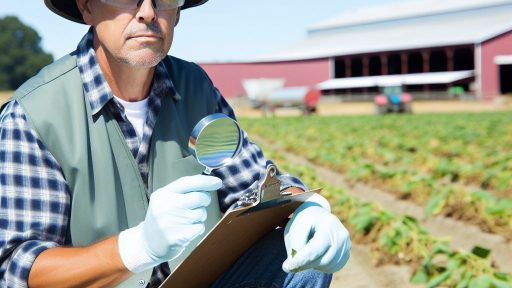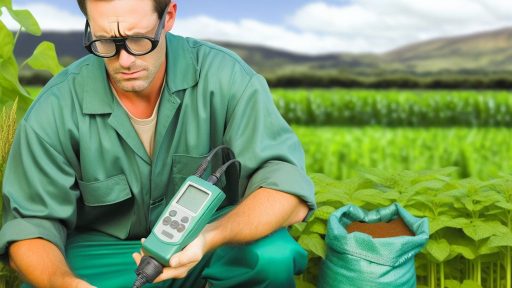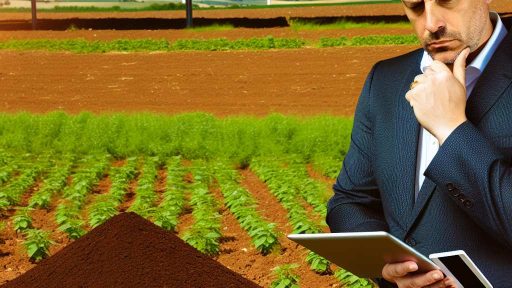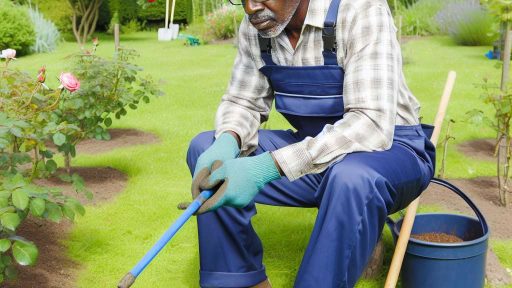Understanding the Importance of Irrigation in Farming
Essential Role of Water in Agriculture
Water serves as a vital resource in agriculture.
Crops depend on sufficient moisture to grow effectively.
Without adequate irrigation, farmers face significant yield losses.
Furthermore, water scarcity can impede crop development.
Impact on Crop Yields
Effective irrigation enhances crop productivity significantly.
It allows farmers to cultivate diverse crops throughout the year.
Moreover, consistent irrigation reduces the risk of crop failure.
This leads to more reliable income for farming families.
Mitigating Climate Variability
Irrigation helps farmers manage variable weather conditions.
It compensates for low rainfall during critical growth periods.
This is essential in regions prone to droughts.
Consequently, irrigation supports consistent harvests and food security.
Soil Health and Nutrient Management
Proper irrigation practices promote better soil health.
Consistent moisture levels facilitate nutrient absorption by plants.
Additionally, well-irrigated soils prevent erosion and degradation.
Transform Your Agribusiness
Unlock your farm's potential with expert advice tailored to your needs. Get actionable steps that drive real results.
Get StartedThis ultimately enhances long-term agricultural sustainability.
Economic Benefits for Farmers
Investing in irrigation systems can yield economic advantages.
Farmers experience improved crop quality and marketability.
Increased yields often translate into higher profits.
Additionally, irrigation can lower production risks, boosting farmer confidence.
Types of Irrigation Systems: An Overview
Surface Irrigation
Surface irrigation involves the application of water directly to the soil surface.
Farmers can use gravity to distribute water across their fields.
This traditional method is effective for many crops but requires careful management.
Moreover, it may not be suitable for all soil types.
Drip Irrigation
Drip irrigation delivers water directly to the plant roots.
This system minimizes water loss through evaporation and runoff.
It is ideal for areas with limited water supply.
Additionally, it promotes healthy plant growth by providing consistent moisture.
Sprinkler Systems
Sprinkler systems spray water over crops in a manner similar to rainfall.
They can cover large areas efficiently and evenly.
Investing in a portable or fixed system can enhance flexibility.
However, these systems may require higher energy costs for operation.
Subsurface Irrigation
Subsurface irrigation places water below the soil surface.
This method reduces evaporation and weed growth significantly.
It can improve soil moisture levels and crop yields.
Nonetheless, installation can be costly and complex.
Considering Regional Climate
When choosing an irrigation system, consider your local climate conditions.
Some systems are more efficient in dry regions than in wet ones.
In areas with high rainfall, surface irrigation may be less effective.
Showcase Your Farming Business
Publish your professional farming services profile on our blog for a one-time fee of $200 and reach a dedicated audience of farmers and agribusiness owners.
Publish Your ProfileUltimately, the right system should align with your environmental needs.
Evaluating Crop Needs
Your choice of irrigation system should also depend on the crops you grow.
Certain crops need consistent moisture, while others are more drought-tolerant.
Matching the system to your crop requirements can maximize yield.
Costs and Maintenance
Each irrigation system varies in installation and maintenance costs.
Drip systems generally have higher upfront costs but lower operational expenses.
In contrast, surface irrigation may be less expensive but require more labor.
Consider both initial and long-term investments when selecting a system.
Factors to Consider When Choosing an Irrigation System
Water Availability
Assess the availability of water resources on your property.
This includes surface water and groundwater options.
Your irrigation system must match the water source’s reliability.
Soil Type
Test your soil to determine its composition and texture.
Soil type affects water retention and drainage capabilities.
Choose an irrigation method that complements your soil characteristics.
Crops and Plant Needs
Identify the crops you plan to grow and their specific needs.
Different plants require varying amounts of water at different stages.
Ensure your irrigation system can meet these requirements efficiently.
Irrigation Methods
Evaluate the various irrigation methods available to you.
These include drip, surface, and sprinkler systems.
Each method has distinct advantages and limitations.
Cost Considerations
Analyze your budget to determine what you can afford.
Include both initial installation and ongoing maintenance costs.
Consider the long-term economic benefits of the system you choose.
System Management
Factor in how much time you can dedicate to managing your irrigation system.
Some systems require more hands-on oversight than others.
Automated systems may save time but can be more expensive initially.
Environmental Impact
Evaluate the environmental impact of your irrigation choices.
Choose systems that use water efficiently to minimize waste.
Consider the ecological effects on local habitats and groundwater.
Regulatory Requirements
Research local regulations regarding water usage and irrigation practices.
Compliance with these laws is essential to avoid penalties.
Stay informed about any changes in agricultural water regulations.
Discover More: Improving Soil Fertility Through Proper Fertilizer Management
Comparative Analysis of Drip vs. Sprinkler Irrigation Systems
Overview of Drip Irrigation
Drip irrigation delivers water directly to the base of plants.
This method minimizes water loss through evaporation.
Farmers often use it for its efficiency and precision.
Benefits of Drip Irrigation
Drip irrigation enhances water use efficiency significantly.
It reduces weed growth by delivering water directly to crops.
Additionally, it conserves moisture in the soil.
This system can be tailored to various crop types.
Showcase Your Farming Business
Publish your professional farming services profile on our blog for a one-time fee of $200 and reach a dedicated audience of farmers and agribusiness owners.
Publish Your ProfileChallenges of Drip Irrigation
Maintenance can become labor-intensive over time.
Clogged emitters may hinder water flow.
Initial installation costs may be higher than other systems.
Overview of Sprinkler Irrigation
Sprinkler irrigation mimics rainfall through systems of pipes and pumps.
Water is sprayed through overhead nozzles.
This method covers large areas efficiently.
Benefits of Sprinkler Irrigation
Sprinkler systems are versatile and easy to set up.
They can be adjusted to accommodate various field shapes.
Moreover, they apply water evenly across the landscape.
Challenges of Sprinkler Irrigation
Wind can impact the distribution of water.
Water loss due to evaporation is a common issue.
Additionally, this method may use more water overall compared to drip systems.
Cost Considerations
Drip systems require a higher upfront investment than sprinklers.
However, long-term cost savings may outweigh initial costs.
Sprinkler systems generally have lower setup costs.
Maintenance costs can vary based on the irrigation method selected.
Environmental Impact
Drip irrigation reduces overall water usage, promoting sustainability.
This method decreases runoff and soil erosion.
Conversely, sprinklers can contribute to water wastage if not managed properly.
Factors to Consider When Choosing an Irrigation System
Choosing between drip and sprinkler irrigation depends on specific needs.
Farmers should consider crop type, budget, and climate conditions.
Ultimately, the right choice promotes efficient water usage and crop success.
Delve into the Subject: Maximizing Crop Yields With Strategic Harvesting In Rural Real Estate Ventures
The Role of Soil Type and Topography in Irrigation Selection
Understanding Soil Types
Different soil types have unique characteristics that affect water retention.
Sandy soils drain quickly and require more frequent watering.
On the other hand, clay soils retain moisture well, reducing irrigation needs.
Loamy soils, being a balance of sand and clay, offer good water retention and drainage.
Thus, understanding soil type is crucial for effective irrigation planning.
Analyzing Topography
Topography plays a significant role in how water moves across the land.
Flat terrains allow water to spread evenly, making irrigation simpler.
In contrast, hilly areas lead to runoff, which can waste water resources.
Landowners must assess the slope and elevation of their fields carefully.
Additionally, knowing how water flows can help in designing effective irrigation systems.
Combining Soil and Topography Insights
Integrating soil type and topography information is essential for irrigation decisions.
This combination helps identify potential challenges, such as waterlogging or drought.
Furthermore, tailored irrigation strategies can maximize water efficiency.
For instance, implementing targeted drip irrigation on slopes can reduce runoff.
Similarly, sprinklers may work better in flat areas with sandy soils.
Choosing the Right System
Several irrigation systems exist, each suited for specific conditions.
Drip irrigation is efficient for gardens or rows of crops in sandy soils.
Showcase Your Farming Business
Publish your professional farming services profile on our blog for a one-time fee of $200 and reach a dedicated audience of farmers and agribusiness owners.
Publish Your ProfileSurface irrigation works well in flat areas with loamy soils.
Moreover, sprinkler systems can be beneficial for larger properties, especially on flat terrain.
Ultimately, evaluating both soil type and topography ensures a successful irrigation plan.
You Might Also Like: Conservation Tillage Systems for Improving Water Retention
Cost Analysis: Initial Investment vs. Long-Term Savings
Understanding Initial Costs
Every irrigation system requires an upfront investment.
Farmers need to consider equipment and installation expenses.
Additionally, site preparation can add to the initial costs.
For example, drip irrigation often has a higher initial price.
However, this system may produce better long-term results.
Evaluating Long-Term Savings
Long-term savings come into play when considering water efficiency.
Systems like center pivots help reduce water waste effectively.
Consequently, these systems can significantly lower water bills.
Moreover, efficient irrigation can boost crop yields over time.
Thus, the initial investment may pay off through enhanced output.
Analyzing Maintenance Costs
Maintenance is a critical component of overall irrigation costs.
Some systems require more frequent upkeep than others.
For instance, conventional systems often need regular checks.
In contrast, modern technologies may have lower maintenance needs.
Therefore, farmers should factor in these ongoing expenses.
Return on Investment Considerations
ROI calculations help determine the financial viability of systems.
Farmers can assess their payback periods to gauge efficiency.
It’s crucial to consider both immediate and future returns.
Ultimately, choosing the right irrigation system impacts long-term profitability.
Discover More: Greenhouse Cultivation for Growing High-Value Vegetables and Herbs

Technological Advances in Irrigation: Smart Systems and Automation
Overview of Smart Irrigation Technologies
Smart irrigation technologies enable efficient water management for farms.
These systems use data and sensors for precise watering schedules.
Farmers benefit from reduced water wastage and increased crop yields.
Features of Modern Irrigation Systems
Modern irrigation systems include drip irrigation and sprinkler systems.
Drip irrigation delivers water directly to plant roots.
This method minimizes evaporation and runoff, promoting efficiency.
Sprinkler systems can be programmed for various watering needs.
They can cover large areas and adjust based on weather conditions.
Benefits of Automation in Irrigation
Automation streamlines irrigation processes significantly.
These systems can schedule watering based on soil moisture levels.
They also react to real-time weather changes to conserve water.
This leads to healthier plants and reduced labor costs for farmers.
Integration of IoT in Irrigation Systems
The Internet of Things (IoT) revolutionizes how farmers manage water.
IoT sensors provide data on soil moisture and climate conditions.
This information allows farmers to make informed irrigation decisions.
Moreover, remote access to systems offers greater control and flexibility.
Showcase Your Farming Business
Publish your professional farming services profile on our blog for a one-time fee of $200 and reach a dedicated audience of farmers and agribusiness owners.
Publish Your ProfileCase Studies of Successful Implementations
Many farms have successfully implemented smart irrigation technologies.
For example, Green Valley Farms improved water usage by 30%.
Similarly, Oak Tree Orchard increased crop yields through automation.
These case studies show the positive impact of smart irrigation.
Challenges and Considerations
Despite benefits, farmers face challenges with adoption.
Initial investments in technology can be significant.
Furthermore, technical knowledge is essential for effective use.
There may also be integration issues with existing systems.
Future Trends in Irrigation Technology
The future of irrigation technology looks promising.
Emerging trends include drone-assisted water management.
Additionally, advancements in AI will further enhance accuracy.
Farmers who adapt to these innovations will thrive.
Environmental Impact of Different Irrigation Methods
Overview of Irrigation Methods
Irrigation plays a crucial role in agriculture.
Different methods affect the environment in various ways.
Farmers often face choices that impact their land and resources.
Surface Irrigation
Surface irrigation is one of the oldest methods used.
It involves flooding the field with water.
This method often leads to water loss through evaporation.
Furthermore, it can cause soil erosion and nutrient runoff.
Drip Irrigation
Drip irrigation delivers water directly to plant roots.
This method minimizes water waste substantially.
Consequently, it reduces evaporation and runoff.
Moreover, it enhances overall soil health.
Sprinkler Irrigation
Sprinkler systems simulate natural rainfall.
They can cover large areas efficiently.
However, they may also contribute to water loss through evaporation.
Additionally, improper installation can lead to uneven distribution.
Environmental Considerations
Choosing an irrigation system affects local ecosystems.
Excess water usage can lead to water scarcity.
Moreover, some practices may adversely impact groundwater levels.
Farmers must consider long-term sustainability in their choices.
Innovative Technologies
New technologies improve water efficiency in irrigation.
Smart sensors now monitor soil moisture levels.
These systems adjust irrigation based on real-time data.
Thus, they reduce water waste significantly.
Implications of Irrigation Choices on Environmental Health
The impact of irrigation methods on the environment is profound.
Awareness of these consequences is essential for sustainable farming.
Farmers should strive to balance productivity and environmental health.
Case Studies: Successful Irrigation Practices from Various Regions
Innovative Techniques in California
Farmers in California have adopted drip irrigation systems with great success.
This method minimizes water wastage effectively.
Showcase Your Farming Business
Publish your professional farming services profile on our blog for a one-time fee of $200 and reach a dedicated audience of farmers and agribusiness owners.
Publish Your ProfileMoreover, it promotes optimal crop growth.
Tommy Rodriguez, a local farmer, increased his yields by 30% using this system.
Transitioning to drip irrigation significantly reduced his overall water consumption.
Flood Irrigation in Australia
In Australia, flood irrigation remains a common practice.
Farmers utilize this technique for crops like rice and cotton.
This method allows for uniform water distribution across large fields.
Susan Harris, a rice farmer, has successfully implemented this technique.
Her fields now show improved crop health and yield consistency.
Subsurface Irrigation in the Midwest
Midwest farmers are increasingly using subsurface irrigation systems.
This method involves placing drip tubes below the soil surface.
It enhances water delivery directly to plant roots.
Johnathan Clark successfully adopted this practice for his cornfields.
As a result, he noted a significant decrease in weed growth.
Rainwater Harvesting in Africa
African farmers have embraced rainwater harvesting systems.
This practice collects and stores rainwater for irrigation during dry spells.
Alice Mwangi, a farmer in Kenya, has benefited from this method.
It has provided her crops with a reliable water source, boosting resilience.
Consequently, her farm has become more sustainable and productive.
Precision Irrigation in Europe
European farmers are leveraging precision irrigation technologies.
This method combines data analytics with irrigation practices.
Markus Schmidt, a vineyard owner, reported enhanced grape quality.
He utilizes soil moisture sensors to guide irrigation schedules.
This technique ensures efficient water usage while maximizing crop output.
Additional Resources
What is Syntropic Farming?: A Permaculture Perspective — Porvenir …
Land is a bank account: A journey into the polluted heart(land) of …




